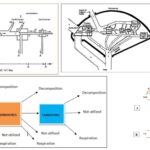How do you calibrate a pipette?
How do you calibrate a pipette?
Please login to submit an answer.
Calibrating a pipette ensures that it dispenses the correct volume of liquid as indicated on its scale. Calibration is typically done using a high-precision balance and distilled water. First, clean the pipette and attach a disposable, clean tip. Set the pipette to a predetermined volume (e.g., 1 mL) and draw the liquid into the pipette, then dispense it into a pre-weighed container. Weigh the container after dispensing the liquid. Since 1 mL of distilled water weighs approximately 1 gram, the weight should correspond to the volume set on the pipette. If there is a discrepancy between the expected and actual weight, the pipette may need adjustment by a technician. This process is repeated for multiple volumes to ensure the pipette’s accuracy across its entire range. Regular calibration is necessary to maintain the pipette’s precision over time, and many labs perform pipette calibration periodically to ensure reliability.
- Share on Facebook
- Share on Twitter
- Share on LinkedIn
Helpful: 0%




